Research Project @Zario:
Validation Study and Conception of a new Feature
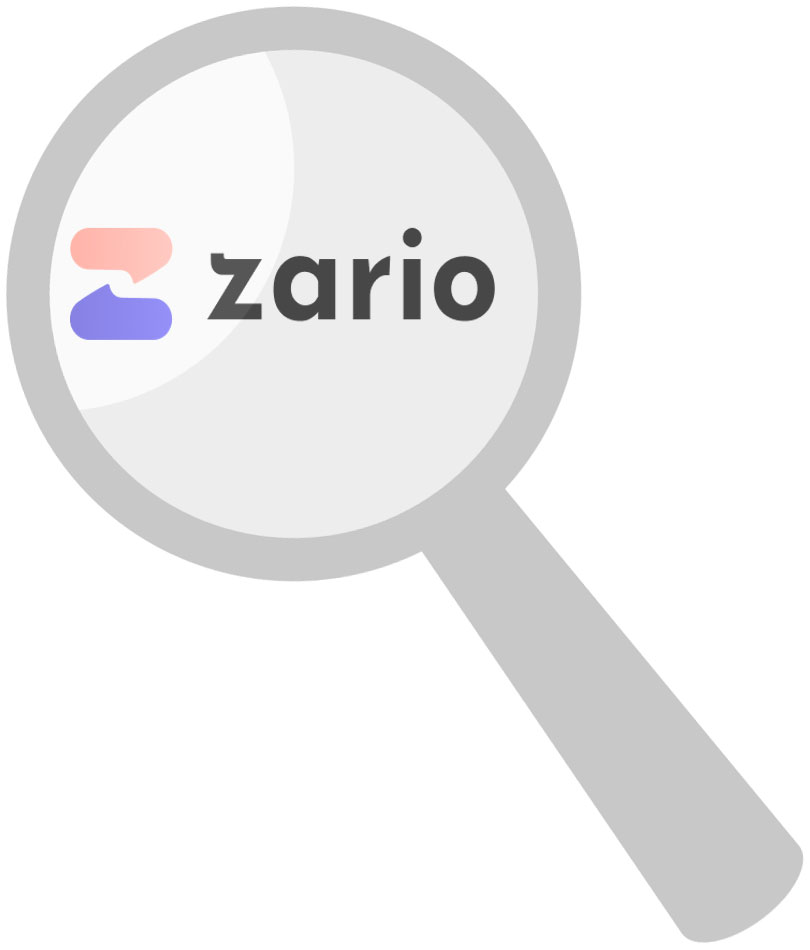
From March 2022 to February 2023, I did a research internship for my master's thesis at Zario. Zario is a digital health start-up from Zurich that develops an app of the same name. The app helps users reduce their screen time and live a more digitally balanced life - check it out here! To read the scientific paper documenting all aspects of the project, including a comprehensive literature review, sources, experimental procedures and statistical analysis, please follow this link. Below is a short summary of just the main aspects and key findings.
My project with Zario had two main objectives:
- To provide a post-hoc theoretical substantiation and analysis of the app's working mechanism and to empirically quantify its effectiveness.
- To develop a new feature based on behavioural science theory.
The project began with an in-depth analysis of the theoretical underpinnings of the app's first generation of features in order to map the underlying mechanisms to existing theory.
Through an extensive literature review and careful examination of user journeys and existing features, it became clear that Zario's design was best viewed through the lens of dual-process models: As famously proposed by behavioural economists Tversky & Kahnemann, our minds typically operate in one of two modi operandi. System 1 is fast, automatic and instinctive. It allows us to quickly recognise a friend's face or react to a sudden danger without thinking too much. It's our brain's shortcut for everyday decisions. System 2 is slower and more deliberate. We use it when we need to think carefully, in situations where we deliberate and consider all the information available, such as when deciding on the quality/price ratio of a takeaway lunch or when doing our taxes.
Using this dual systems lens to analyse the current state of the app, it became clear that Zario's first generation of features, the 'micro-challenge' approach, was mainly trying to help people improve their digital wellbeing by addressing System 2 type mechanisms. Micro-challenges are broadly defined tasks or exercises that relate to smartphone use and encourage the user to take active steps to understand, manage and reduce their use. An example of such a challenge is the 'crucial morning routine' challenge - the user is asked to plan and implement a concrete change in their morning routine that could help reduce smartphone use during the morning hours, such as using a traditional alarm clock instead of the smartphone so that the phone can be left in another room out of reach, or dedicating a certain time each morning to exercise before scrolling on the phone.
Bearing in mind that most addictive apps get us hooked by hijacking our brain's reward circuitry by appealing to System 1-type processes, I realised that Zario could benefit greatly from implementing a feature that also appeals to fast and automatic System 1-type processes. In other words: Fight fire with fire.
For a brief documentation of the validation study and the conception and realisation of the new feature, please click here:
Determining the Quantification of Digital Wellbeing
Testing the effectiveness of the first version of the app began with the question of how digital wellbeing could and should be measured. Determining users' digital wellbeing revolved around assessing two fundamental dimensions:
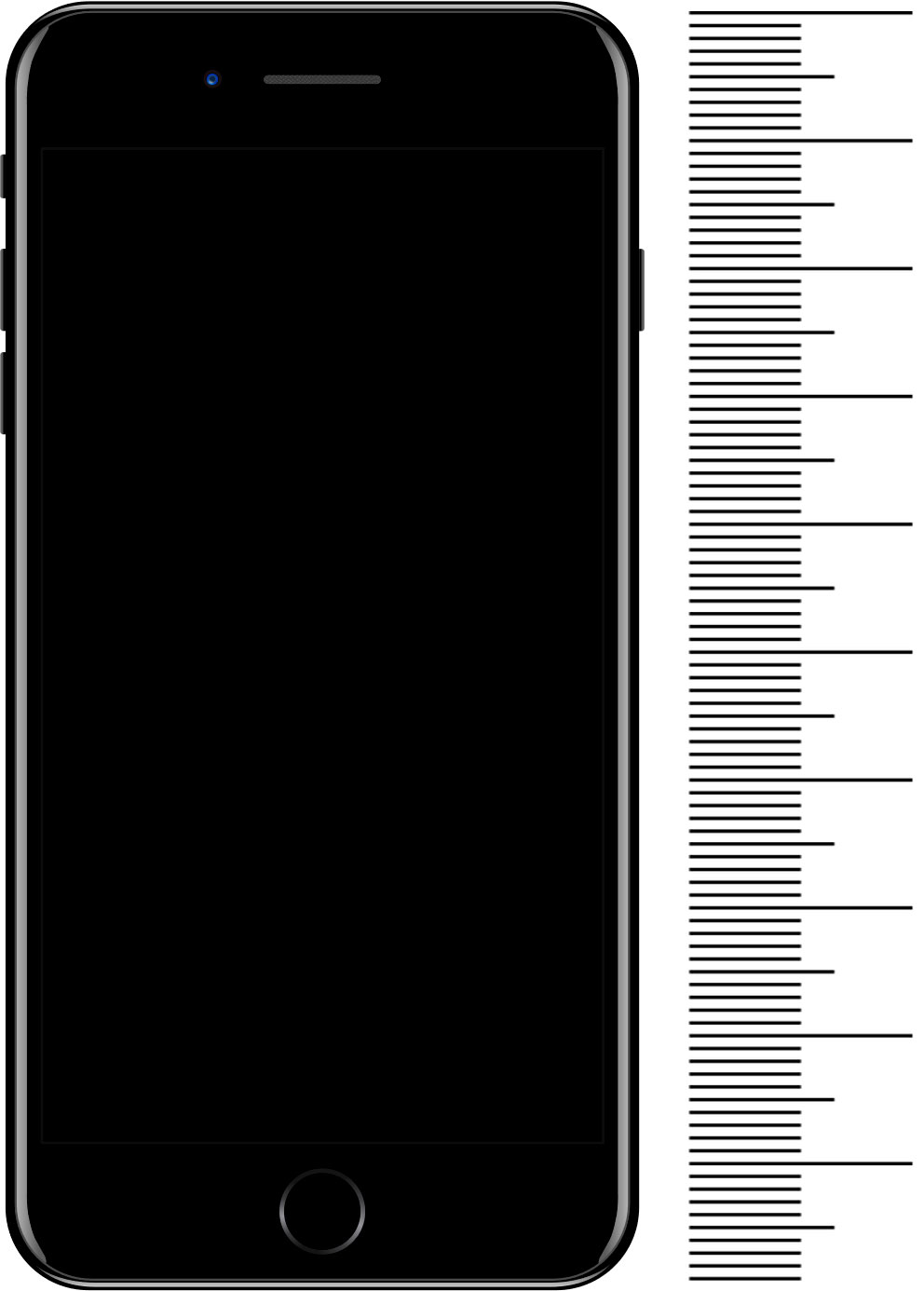
1. Problematic Smartphone Use (PSU)
PSU is defined as "[...] an uncontrolled and compulsive (over)use of the smartphone associated with negative consequences (e.g.: withdrawal, impaired user productivity, social relationships, physical health) that can lead to impairment of the user's daily functioning" (Marino et al., 2011, p. 47). (Marino et al., 2021, p. 47). It is typically measured by self-report; respondents complete a questionnaire, which yields a score that describes the healthiness of their smartphone-related behaviours or the presence of problematic or addictive tendencies. To measure PSU, I used the Structured Assessment of Smartphone Addiction Scale (SAS-SV), which is recognised as the most relevant and validated questionnaire in this area.
2. Screen Time
Of course, not all screen time is created equal - in the relevant literature, it is mostly prolonged use of social media that correlates with reduced digital wellbeing, and there are many use cases in which we spend time on our phones in very purposeful and unproblematic ways, such as using Google Maps or learning a new language. However, as PSU is an indirect measure that relies on people's subjective estimates, it was important to add screen time as a direct measure that objectively accounts for use.
Experimental Design and Implementation
The experimental design followed a simple pre-post control group logic (see Figure 1). Prior to the start of the experiment, all 30 participants answered a series of questions designed to measure their PSU levels and provided quantitative and objective data (screenshots of the screen time menu) on their average daily screen time. Participants were then randomised into two groups, the experimental group and the control group. Participants in the experimental group used the Zario app for one week, while the control group followed a daily one-hour digital detox routine. At the end of the week-long intervention, participants provided data on the same measures as before the intervention to see how PSU and screen time levels had changed as a result of the intervention and to compare between groups.
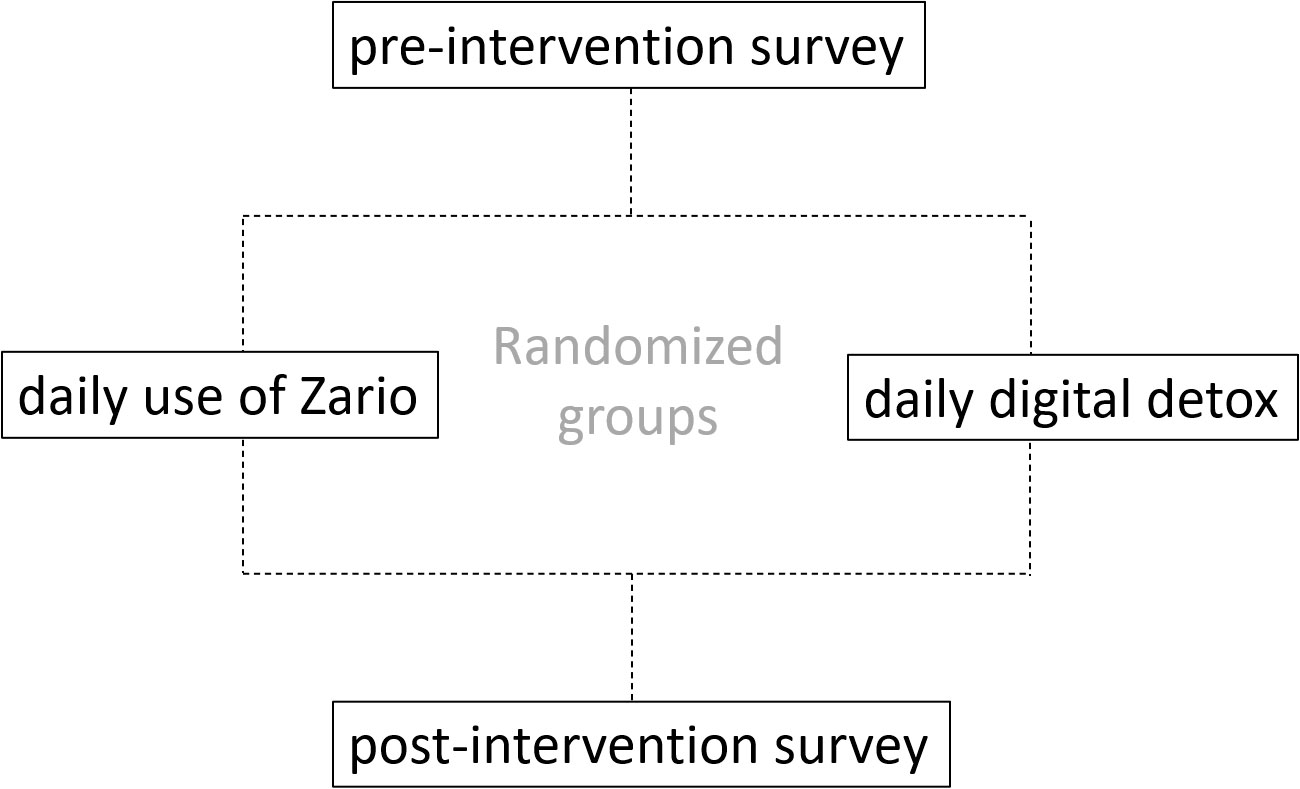
Figure 1. Basic logic of the experimental design. All participants took the pre-intervention survey, then were randomly assigned to either the control group or the experimental group and then took the survey again after the intervention.
Outcomes
PSU
Participants in both groups showed less problematic smartphone use when re-evaluated using thesame questionnaire as one week earlier. However, the effect was significantly more pronounced among those who used the Zario app. Remarkably, more than 90% of the participants who were classified as being at risk of addiction before using Zario were no longer classified as such after the intervention (see Figure 2). In the control group on the other hand, only 70% of those initially classified as at risk of addiction were no longer classified as such after the intervention.
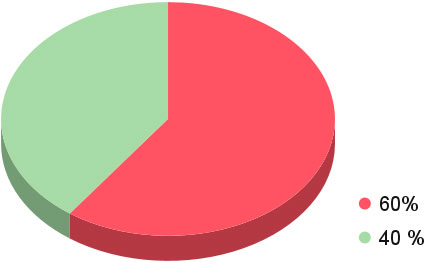
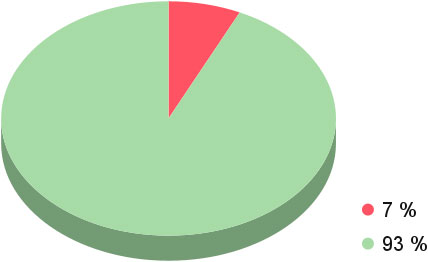
Figure 2. For the group of participants who used Zario, 60% classified as at risk prior to the intervention while only 7% were considered at risk based on the data provided after using Zario for a week.
Screentime
Zario led to a significant reduction in daily screen time, by around 40 minutes. Conversely, adhering to a daily digital detox resulted in a reduction of only about 5 minutes. Note that people in the digital detox group were already one hour ahead in reducing their daily screen time - how can this be explained?
Apart from the conclusion that Zario was simply that much more effective at reducing screen time, a plausible explanation for this phenomenon is the concept of a 'rebound' effect. It is likely that enforced abstinence from smartphone use for one hour each day can lead to a compensatory increase in phone use during the remaining hours of the day. This finding underscores the importance of Zario's approach, which emphasises gamification and a playful "self-hacking" strategy, rather than strict and simplistic prohibitions
After analysing the Zario app from a behavioural science perspective, it became clear that it primarily encourages users to take active measures to understand, manage and reduce their use. However, given the ubiquity of decision contexts that limit such System 2 type conscious and effortful processing and make habitual, System 1 driven behaviours more likely, any application that aims to help people reduce their screen time and combat digital addiction should include a feature that can address situations where c ognitive and attentional resources are low and users fall into fast and automatic modes of processing and consumption. Thus, in addition to validating the effectiveness of the conscious, `micro challenge` approach, which requires active effort on the part of the user, a closer look at dual process theory served to conceptualise and design a feature that would not require so much active effort on the part of the user, but would work more along the lines of the logic that apps like Tinder and Instagram use to get users hooked in the first place.
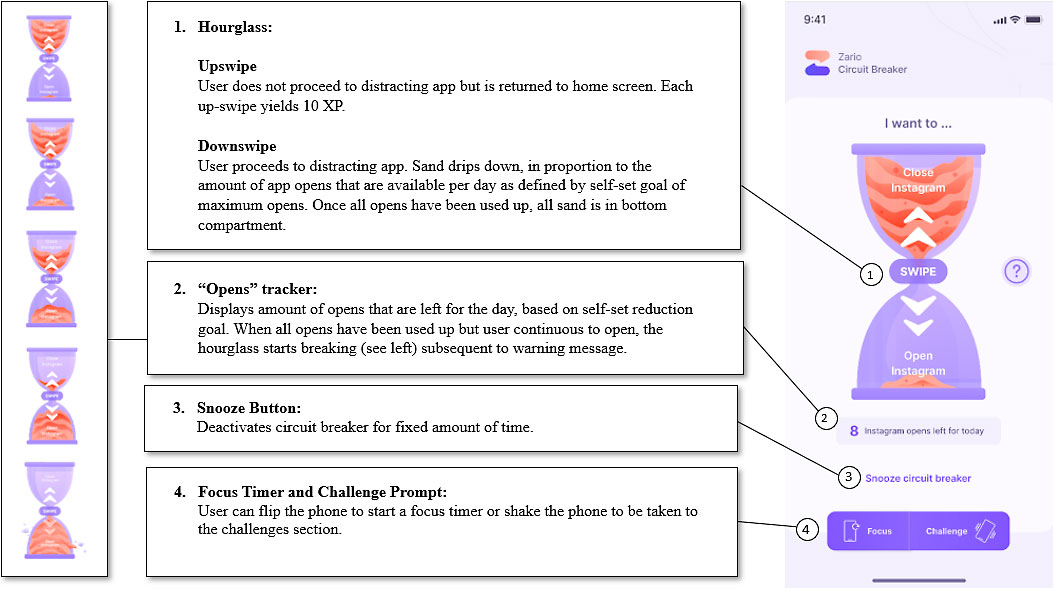
Accordingly, the Circuit Breaker was designed as a complementary feature that primarily addresses Type 1, quick and automatic processing . While Zario's micro challenges are delivered on screen and through the app, thei r primary locus of intervention is the user's deliberate cognition and conscious processing. Users are empowered to make changes themselves based on the knowledge and 'hack' instructions provided. The Circuit Breaker, on the other hand, uses the screen its elf as the locus of intervention. Its main goal is more narrowly defined, not to target overall engagement per se, but to reduce the opening of specific distracting apps. Overall engagement with the smartphone, or more mindful use, may be desirable, but is only a side effect. T he design of the CB has been guided by the principle of modifying the choice architecture of the very moment that a user attempts to open a
distracting app, to trigger behavioural reflexes and encourage automatisms that are aligned with the goal of refraining from mindless scrol ling. As u sers themselves know best which apps they are most addicted to and distracted by , the users themselves can choose the app s for which they want to activate the feature.